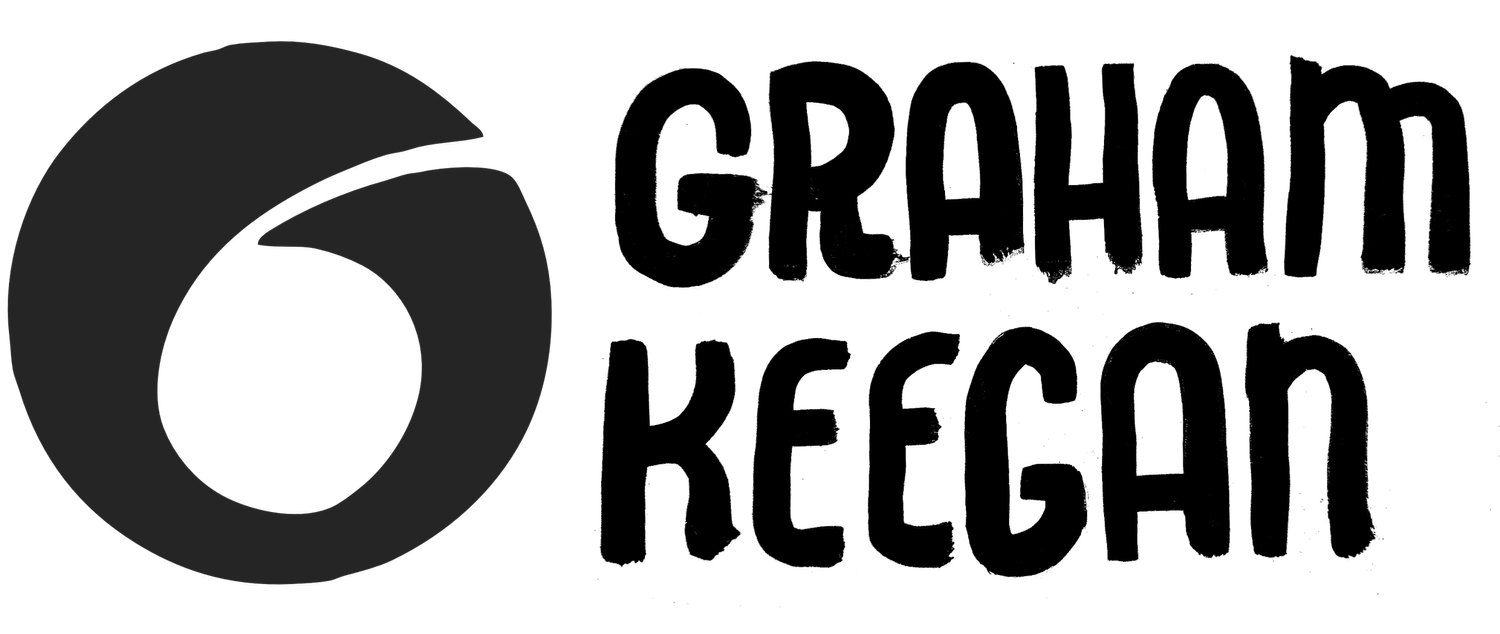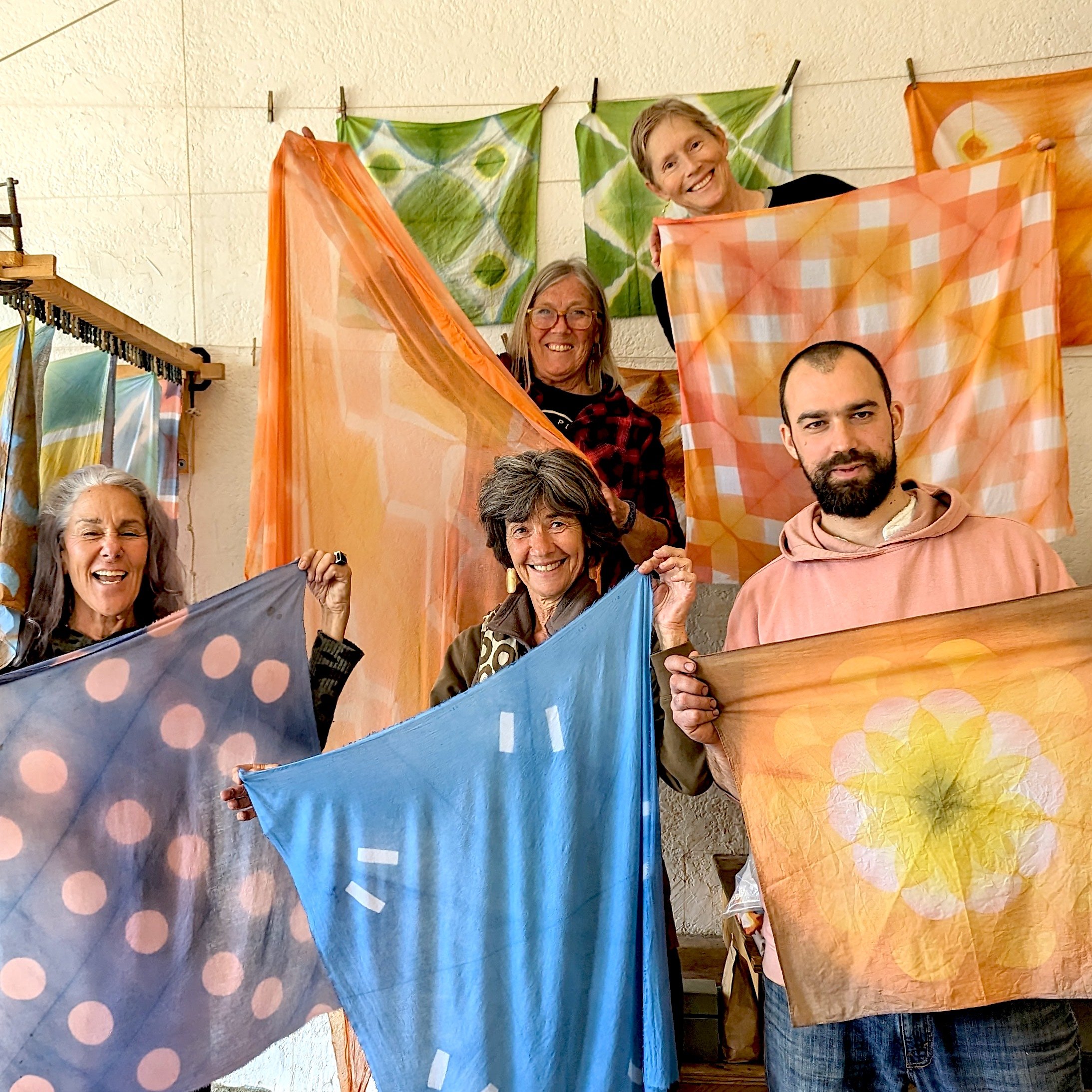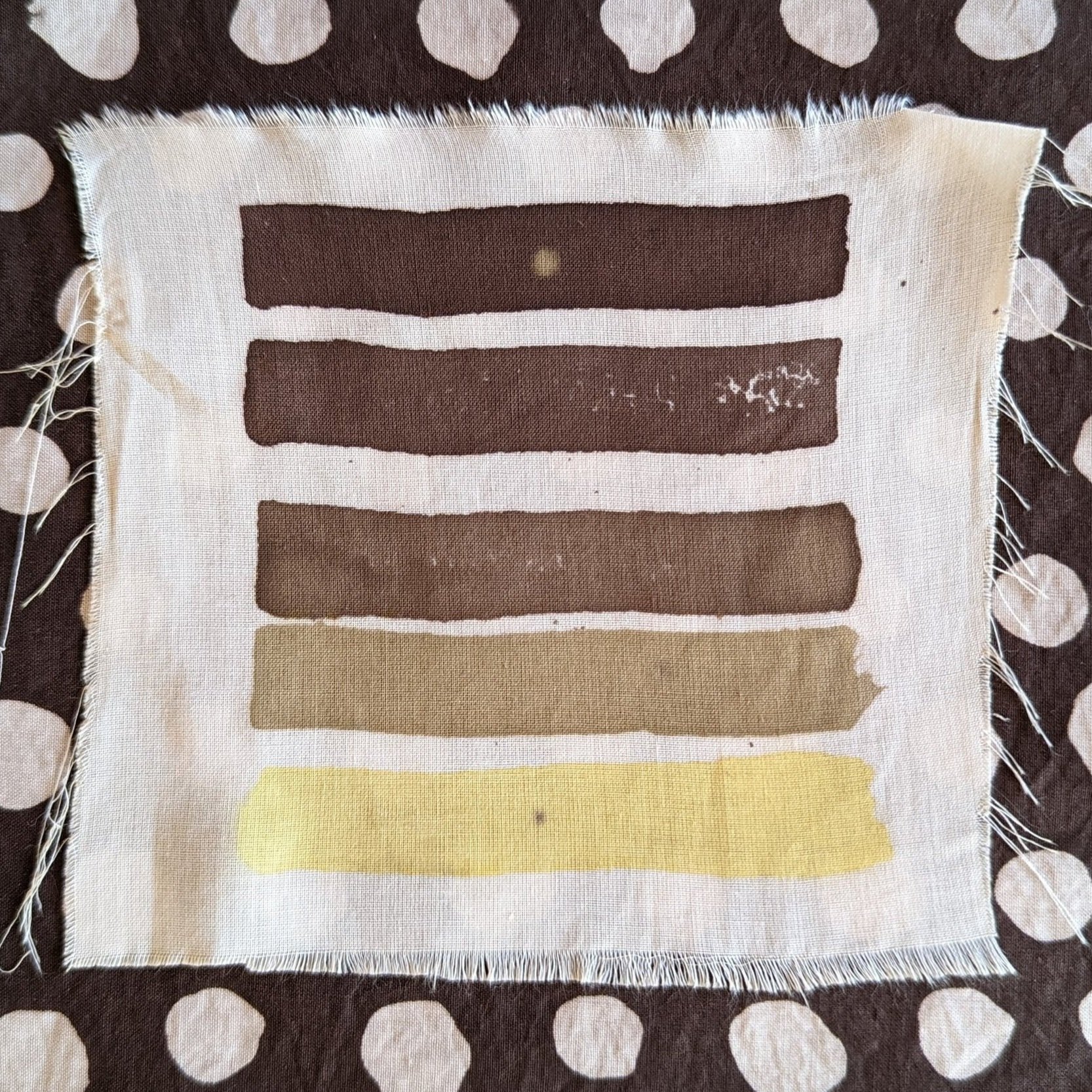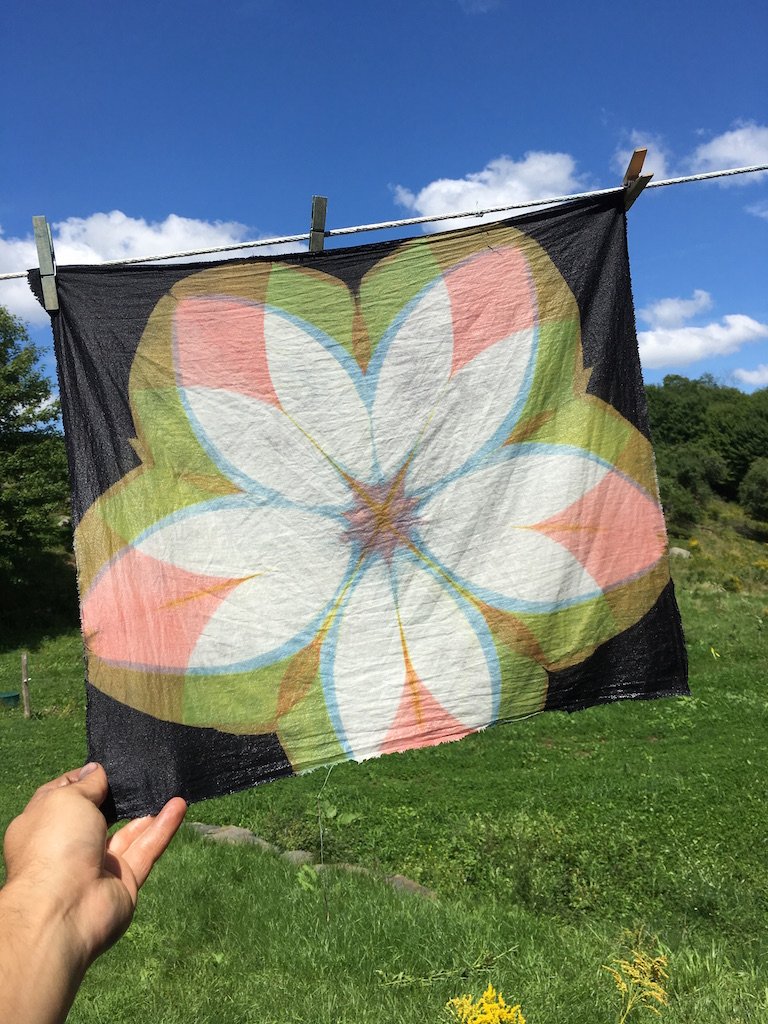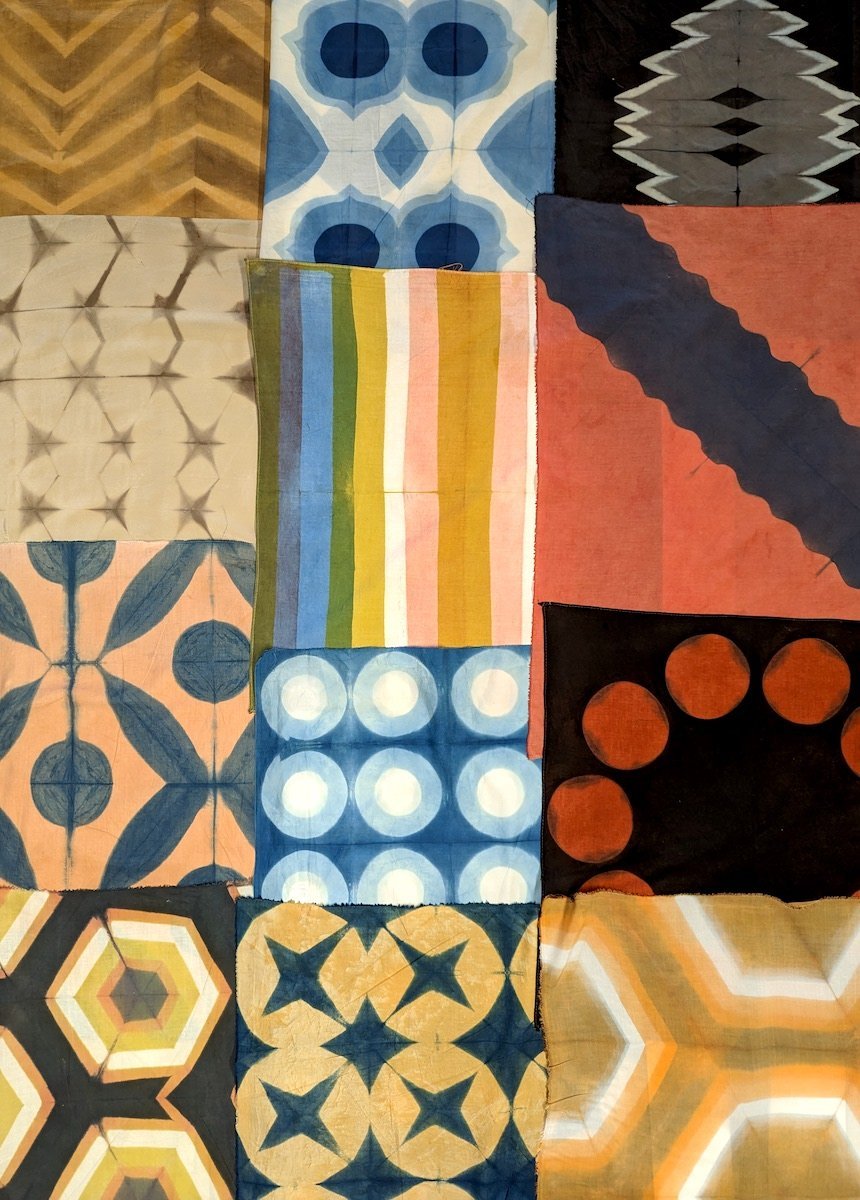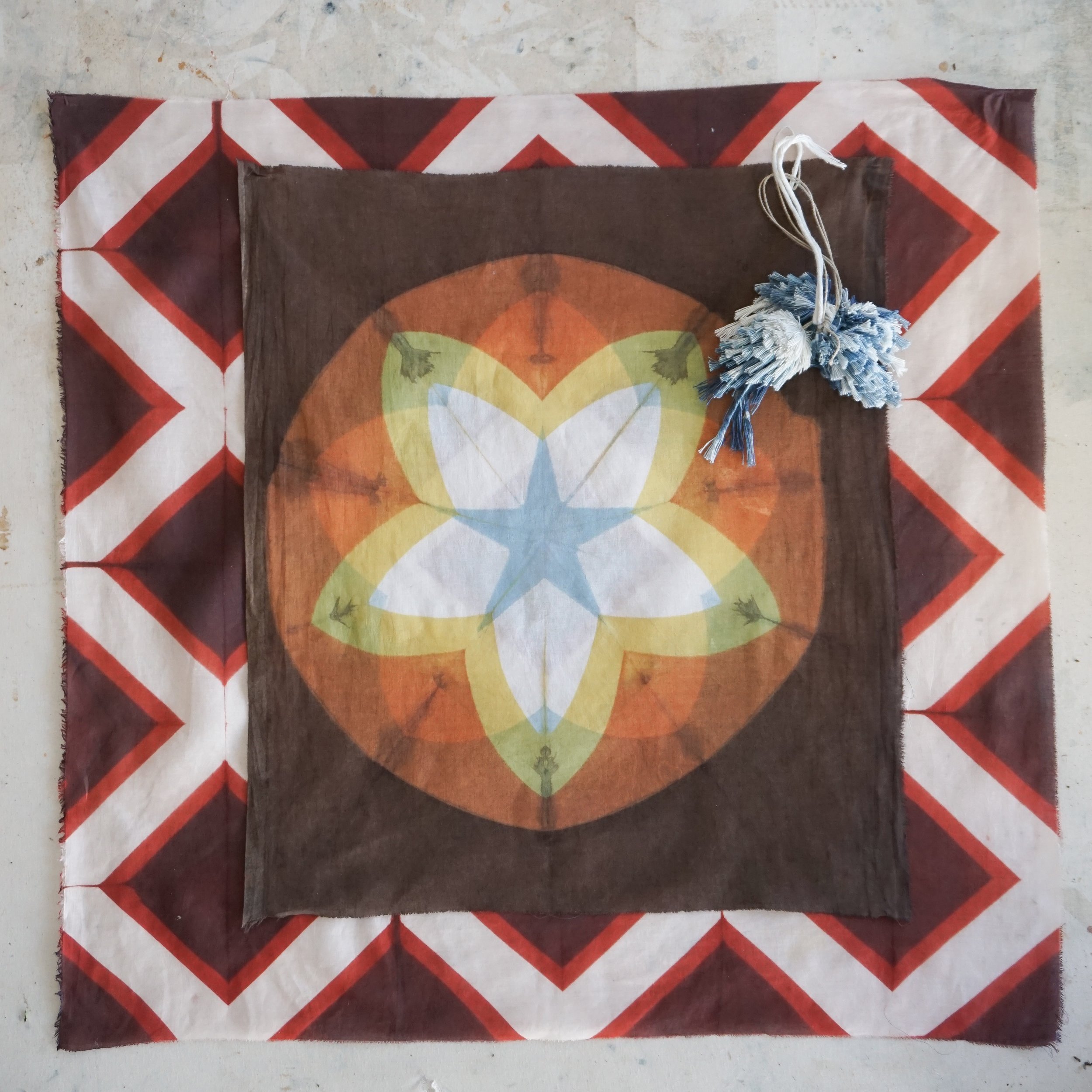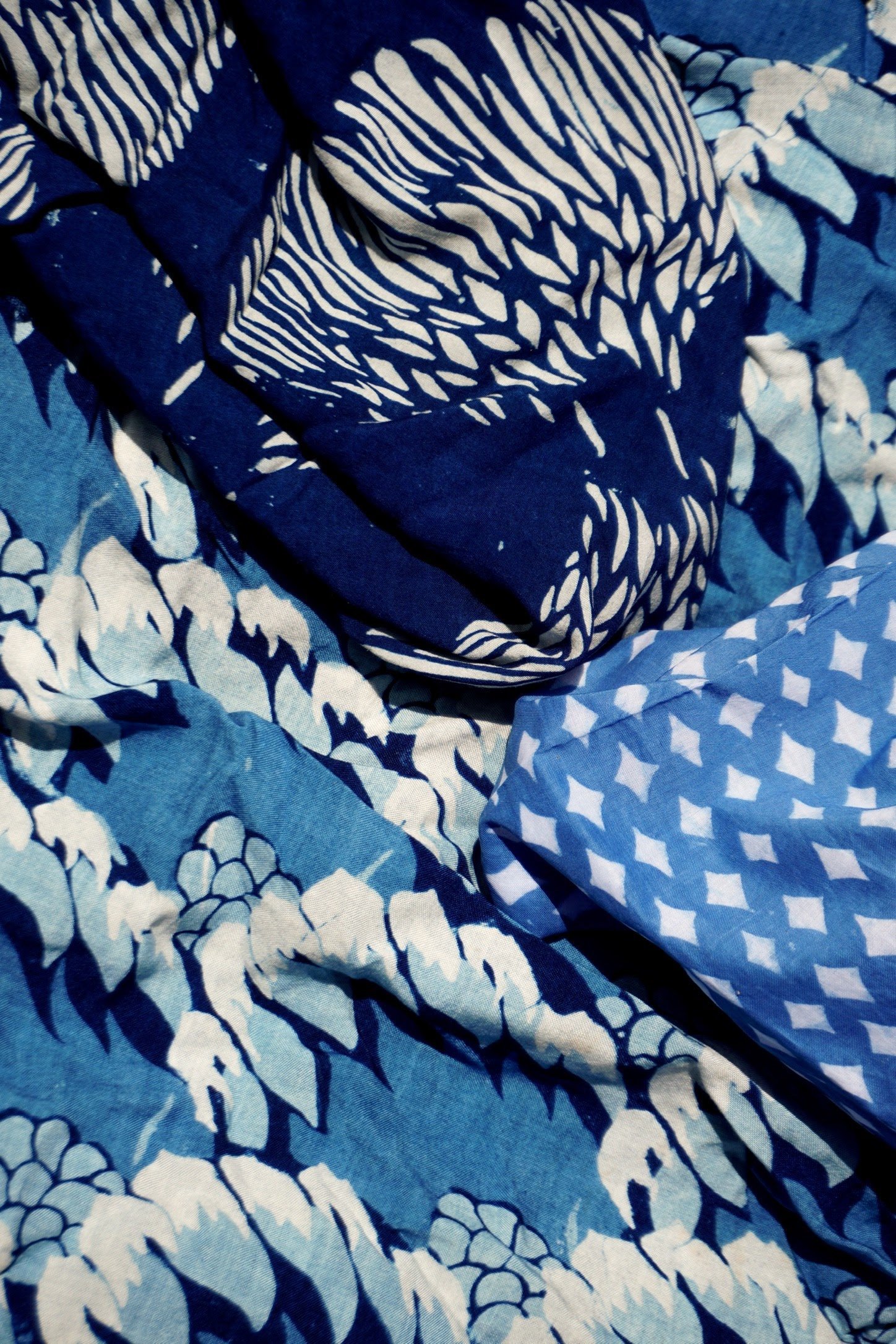CLASSES & WORKSHOPS in Los Angeles Spring 2025
Please browse the calendar below and select classes from there. Workshops are typically announced at least two months in advance and often fill to capacity.
Graham Keegan teaches one-day natural dye classes and longer form workshop series’ from the storefront in Silver Lake, Los Angeles.
If you would like to explore a natural dye subject and don't see a group course listed, can't find a date that will work or you would prefer to learn privately, you can request and schedule an individually designed course through the contact form.
Saturday, January 25, 2025 from 1:00 to 4:30 PM
Saturday, March 15, 2025 from 1:00 to 4:30 PM
Sunday, February 23, 2025 from 1:00 to 4:30 PM
Saturday, April 19, 2025 from 1:00 to 4:30 PM
All experience levels welcome and all materials are provided! No previous dye or textile background necessary.
This is an introduction to Indigo - the plant, they dye and the process! In the cozy studio in Silver Lake, we’ll explore the possibilities of dip-dyeing in the indigo vat with a focus on creating patterns using folds and clamps.
I’ll guide you through the best practices for preparing fabrics for dyeing, from fabric selection, to washing, scouring and post-dyeing treatment that will give your dyed goods the longest life possible!
We will discuss the process for extracting color from plants with as much show-and-tell as possible. From there we will mix up an indigo vat and I’ll demonstrate (and you’ll practice) dipping fabric into the vat in a way that allows for good color uptake and long health of the vat. We will fold and clamp a couple different pieces of fabric and then dip them into the indigo vat. From there we’ll discuss wash and aftercare options for your dyed goods, before sending you on your way with your newly dyed fabrics!
I’ve been working with indigo plants, pigment and pattern for the past fifteen years and I love to share my experiences. If you’ve done any indigo work in the past and have questions or observations that you’re curious about, please bring your questions and any material samples you’d like to share and I’d be happy to discuss them in the class.
Pattern is my speciality and I’ll be sharing the following base-folds which can be combined and modified to create infinite repeat graphics
• STRIPE - fat lines, skinny lines, pinstripes and gingham looks all originate from this one simple fold.
• GRID - ideal for lattices, zigzags and repeating dots or Moroccan tile looks.
• KIKKO - a hexagonal tessellation
• WEDGE - a radial fold perfect as a base for star and floral shapes
Make sure to show up wearing clothes and shoes that you wouldn’t mind getting some splashes of blue on!
Additional fabric, dyeing supplies, soaps and seeds are available for purchase at the shop before or after class.
As always, if you’re interested in attending as a photographer or videographer, I have complimentary spots available if you’re willing to share the images with me for use on my instagram, website or promotion for future classes. I can never get it together to teach and document the classes at the same time!
604 N. Occidental Boulevard, LA CA 90026
Sunday, January 26, 2025 10:00 AM - 4:00 PM
Saturday, February 22, 2025, 10:00 AM - 4:00 PM
Sunday, March 16, 2025, 10:00 AM - 4:00 PM
Sunday, April 20, 2025, 10:00 AM - 4:00 PM
Limited to 8 Attendees
No experience necessaryIn this workshop, we’ll explore working with Indigo blue and the mordant dyes madder red and weld yellow.
We will layer these three primary color dyes on top of each other in order to create MANY different tones on a single piece of fabric - Grass green, plum, maroon, forest green, oranges and auburns.
All materials and supplies are provided. You’ll leave with at least two small square scarves dyed in your choice of color and pattern.
Pattern is my speciality and I’ll be sharing the following base-folds which can be combined and modified to create infinite repeat graphics
• STRIPE - fat lines, skinny lines, pinstripes and gingham and plaid looks all originate from this one simple fold.
• GRID - ideal for lattices, zigzags and repeating dots or Moroccan tile looks.
• KIKKO - a hexagonal tessellation
• WEDGE - a radial fold perfect as a base for star and floral shapes
This is a good-times introduction to a range of natural dye plants and processes!
Please contact me if you have any questions.
No Natural Dye Experience Necessary. This is an introduction and we’ll cover material from the ground up! Creating graphic designs using indigo dye is notoriously challenging. I’ll be drawing from my experiences, successes AND failures to demystify the process and make it as approachable as possible.
At Natural Dyes, 604 N. Occidental Boulevard LA, CA 90026
Saturday, January 18 and Sunday January 19, 2025 10:00 AM to 4:00 PM
Pack a lunch or plan to grab a bagel from Maury’s next door. Meal break from 12:15-1:00 ish
Limit 6 Attendees
RESIST : Indigo only dyes what it can touch! In this workshop students will learn to create a resist paste from rice flour. This paste will be applied onto fabric by brush, stencil and screen. Wherever the paste is applied, the fabric will remain un-dyed while the rest of the piece absorbs color.
DISCHARGE : Indigo can be selectively dissolved my the strong oxidizer Potassium Permanganate. We will learn how to prepare the solution to dissolve the indigo and apply it to the textile using brushes. Screen printing with the medium will be demonstrated but we don’t have time to execute it individually.
Students will explore layering prints to create different tones of blue and will practice the challenging and subtle techniques of dipping printed pieces and maintaining the health of an indigo vat.
SATURDAY
• Discuss fundamental concepts of an indigo vat and mix up a reduction vat. Dipping etiquette, tools and supplies
• Making Resist paste and cutting VERY simple stencils.
• Coating print boards and stretching fabrics
• Developing different tones of indigo on the piece by dipping multiple times and in different strength vats.
• Demonstration of making Shinshi as will more intricate stencils than we are able to accomplish in our limited time together.
• Dyeing and preparing fabric to receive discharge medium tomorrow
SUNDAY
• Applying discharge to fabrics using a variety of methods - brush, block and screen print.
• Removing deposited manganese from fabrics using lemon juice
• Rudimentary layering resist on fabric to create multiple tones of blue on the same fabric.
• Treatment of fabric to provide UV and wash-fastness protection for the indigo
• Sharing of resources for further exploration
604 N. Occidental Boulevard, LA CA 90026
Join Graham at the studio in Silver Lake on
Sunday, February 9, 2025 10:00 AM - 4:00 PM
Limited to 7 Attendees
No experience necessary!
Don’t tell the other dye plants but whenever anyone asks what my favorite natural dye plant is I always say Madder! It is an incredibly potent and versatile root that can express such a big range of colors when paired with different mordants - which is exactly what we are going to be doing in this class!
Pink, Plum, Red, Maroon, Lavender and everything in between!
In this workshop, we’ll introduce and explore printing with natural dye mordants in order to create repeat prints on fabric.
We will be using blocks from the archive to print designs and patterns onto cloth, then developing the prints in an infusion made with the roots of the Madder plant, home-grown here at the workshop in Silver Lake.
All materials and supplies are provided. You’ll leave with at least two small square scarves dyed in your choice of color and pattern.
Please contact me if you have any questions!
604 N. Occidental Boulevard, LA CA 90026
Join Graham at the studio in Silver Lake to
Saturday, February 8, 2025 10:00 AM - 4:00 PM
Limited to 7 Attendees
No experience necessary!
In this workshop, we’ll introduce and explore printing with natural dye mordants and discharge in order to create repeat prints on fabric. Working within the grayscale - everything from black through grey to white, we kick color to the curb for the day! We will work from simple blocks to print patterns onto our fabric. The course will concentrate on preparing fabric for dyeing, block printing and developing the color to our liking in a dye pot.
All materials and supplies are provided. You’ll leave with at least two small square scarves dyed in your choice of color and pattern.
Please contact me if you have any questions!
604 N. Occidental Boulevard, LA CA 90026
Saturday March 8, 2025 - 1:30 - 4:30
Sunday March 9, 2025 - 1:30 - 4:30
Limited to 8 Attendees
No Experience Necessary!
In this workshop we will explore the basics of natural dyeing and how to apply color to yarns made from plants and animals.
This 2 day course is an introduction to the concepts of Natural Dyeing spun together for weavers, knitters, crocheters and macrame-ers! No prior experience with dyeing is required. We’ll be covering all the basics and getting into some nitty gritty about how to actually get dye jobs done!
We’ll be learning about the two major types of natural fibers and the differing ways they behave during the dye process:
Each fiber requires different preparation and dyeing strategies and we’ll cover each of them. We’ll introduce the concept of polar vs. non-polar dyes, mordants, tannins, scouring, finishing, coating and more!
We’ll explore a full rainbow of dyes using flavonoids (goldenrod, weld and cosmos) for yellows and oranges, tannins like sumac and myrobalans for tans and browns. As well as madder for red, mahogany and plum. We have the ability to layer these with indigo for blues! We’ll be using a mix of purchased supplies as well as home-grown dyestuff!
The class is meant to give a broad overview for how to achieve the full rainbow of dyed colors. We will be dyeing in roving and skein form and will discuss how to scale your dye projects to meet the needs of your weaving, knitting and other projects.
All materials necessary are provided, but if you have a yarn that you’d like to test or dye, you’re welcome to bring some. If you’re bringing yarns, please contact Graham in advance so we can make sure that they are properly prepared for the process.
604 N. Occidental Boulevard, Los Angeles, CA 90026
Session 1 - Friday, March 21, 2025 - 1:00-4:30 PM
Session 2 - Friday, March 28, 2025 - 1:00-4:30 PM
Session 3 - Friday, April 4, 2025 - 1:00-4:30 PM
Session 4 - Friday, April 11, 2025 - 1:00-4:30 PM
Beginners Welcome!
Limit 8 Attendees
The experience of using a plant to turn fabric blue is as close to actual magic as I’ve ever found. In this workshop I’ll share as much information, insight and experience as possible in the time available!
Special concentration will be given to working with ACTUAL leaves of indigo plants - both for pigment extraction and vat making! We will establish multiple types of vats including fermentation vats and vats from fresh fruit from the neighborhood.
No Zoom! No mysterious or synthetic dye supplies! This in-person class in the workshop in LA will involve all the senses (there will be strange smells)- getting to know the sights, feels and unseen properties of these amazing plants!
All materials provided. No experience necessary! We’ll be starting from the ground (literally) and working our way up!
This is going to be great! A workshop series just devoted to indigo! I’ll be force-feeding information about the plant (see it, feel it, smell it) as well as my inherited understanding of how to coax blue dye from green leaves! This 4 session course explores indigo - from seeds, to plants, to extracting pigment, activating the pigment in vats, printing patterns and dyeing fabrics.
Human use of indigo stretches into our pre-history. All over the world, different plants produce indigo and the people, in relation to the plants, have discovered uncounted ways of moving the blue out of the plants and onto fabric. I planted indigo seeds months ago, and as a result, we will have the opportunity to work with fresh leaves of Persicaria tinctoria - a variety of buckwheat that produces the precursor molecules of indigo. Once you’ve got the leaves - anything is possible and we’ll be learning a multitude of ways to separate the dye from the plants.
At our Natural Dye workshop in Los Angeles, we’re growing three different kinds of indigo this year and we’ll discuss each of them as well as the traditions and methods for dyeing with each. You’ll leave with seedlings, seeds or cuttings from each species for you to continue to grow on your own if you like!
Below is a loose itinerary of the course
Session One : An introduction to the plants, getting to know the different types of plants that are grown for their indigo content. Soaking and planting of Indigo Seeds! If possible, working with fresh leaves of the indigo plant. If fresh leaves are not available, we’ll be working with dried leaves! Discussing ALKALINITY! and beginning a fermentation vat. We will dive in to some textile analysis of historic Japanese indigo dyed and printed textiles from the Dorothy Miller textile collection as well as works created and printed by Graham Keegan.
Session Two : We’ll discuss and demonstrate a small batch of aqueous indigo extraction. We’ll dive deeper into the theory and PRACTICE of creating an indigo vat and will mix up two different styles of vat. Each with their own attributes, strengths and considerations. Maintaining our Fermentation vat. To round out the day, we’ll create repeat pattern designs onto flat fabrics by folding and clamping bandanas between pairs of wooden shapes.
Session Three : We’ll revisit the vats to check them for health - learning how to diagnose and tune them into optimum shape. We’ll then go on to printing on fabric with a traditional paste made from glutenous rice. The tools and print medium for this process are very specific and we’ll go in-depth into their creation and use including crafting shinshi - a type of bamboo holder/spreader for fabric as well as materials for making stencils and printing with the paste.
Session Four : You’ll guide ME through the process of approaching a vat and checking its health! Adding a second layer of paste to our prints or folded fabrics, we’ll develop a richer tone of blue in addition to our paler blues. In the afternoon we’ll be cleaning up and reviewing all our textiles, playing my favorite game “Why Does This Look Like This??” where we decode our ‘mistakes’ (yes there will be mistakes) as well as our successes to deepen our understanding of the process. We’ll wrap up by discussing additional resources for continued exploration with indigo.
I hope you can join me, this course is going to be a wonderful, special opportunity to work closely with some early 1900s era hand-dyed textiles and the indigo plants themselves!
April 23-25, 2025
10:00 AM to 4:00 PM Daily - Lunch break in there around noon.
Consider this an instructional ridealong!
No experience strictly necessary but some natural dye know-how will provide additional context.
This print session will feature the work of Rob Sato as we print a series of works for an upcoming show.
Graham regularly collaborates with artists to produce limited runs of naturally-dyed screen and block printed artwork. This three-day session is a unique opportunity. Unlike a typical workshop where specific instruction is given on a topic, this will be more akin to an apprenticeship or shadowing opportunity where we explore printing in multiple - a 50-100 piece edition of an artist collaboration print.
You will be working hands-on! In an environment of free exchange of information, Graham will be answering questions and guiding the events of the day as we work together through the process of actually printing a limited edition of an artist's design.
You'll have the opportunity to execute some printing and generally get your hands dirty in various steps of the process.
These sessions will allow just 3 attendees maximum to join Graham as he works through the typical production cycle for an artist print. Creating a single print or work has different considerations from creating multiple pieces. We will work through the following:
Sourcing Materials
Color Separation for multi-color works
Screen Selection and Size
Fabric preparation and handling
Pre-Print Planning
Mordant mixing and print-medium thickening
Print process - maneuvering materials and working with larger squeegees
Batch Dyeing and Color Planning
Post-dye fabric treatments and preparation for packaging
Finishing and packaging goods for sale
We will be on the hunt for beautiful browns, creams, khaki greens and grays for the workshop the following day - Block Printed Natural Dye Camo! This class is designed to be paired with the following, but it does not NEED to be.
Please join for one or both for a 30% discount on the second class - use code HUNTINGCAMO
604 N. Occidental Boulevard, Los Angeles, CA 90026
Saturday, April 5, 2025 from 10:00 to 4:00 PM
All experience levels welcome and all materials are provided! No previous dye or textile background necessary.
Pack a lunch or grab a bagel from next door around noon.
How can you tell whether a plant will be good for dyeing? If you’re not testing, you’re guessing!
In this workshop we will build the tool necessary to test a plant for all kinds of use in natural dyeing! We will be designing a printing a matrix of mordant mixes onto fabric (don’t worry we’ll learn all about it) that will develop in an infusion of any soluble plant material! Its as simple as shoving a piece of fabric into a cup of tea, but we’ll be doing fancy things to the fabric up front and you probably wont want to drink these mixes of barks, roots and leaves!
We will make infusions of a bunch of different plants gathered from around the studio. I welcome you to bring in a collection of plant material of any type of plant that you’re curious about and we can see what its capable of!
These test swatches will give information on how much and what types of colors are available from each plant. We will then set up light-fastness tests to see how well the colors hold up against Ultraviolet light.
You’ll leave the class with a whole stack of swatches with information about local plants as well as unused swatches that that will allow you to test other plants. These test swatches do not have an expiration date so you can use them up to decades later to gather information about any plant you’re curious about.
Sunday April 6, 2025 10:00 AM - 4:30 PM
At the Natural Dyes Workshop, 604 N. Occidental Boulevard, Los Angeles CA 90026
This class is designed to be paired with the class on the previous day where we will hunt out the colors to be used in this workshop - but it does not NEED to be, they can each be taken stand-alone.
Please join for one or both for a 30% discount on the second class - use code HUNTINGCAMO at checkout.
Class size limited to 8
We’re celebrating patterns of “cryptic coloration” affectionally known as “camo”!
I’ve prepared a set of printing blocks in natural, organic shapes that we will be printing and layering onto our textiles that will allow us to develop multiple colors in a dyepot simultaneously. We will each have the opportunity to lay our our own composition and color balance using the provided blocks.
We will develop our prints in infusions of barks and leaves from around the neighborhood that will give us classic earthtones - browns, mustard, khaki, drab, olive etc.
We will walk (sometimes crawl, sometimes run) through the process including all the following:
• Ideal Fabric Selection for this process and Scouring fabrics that require it
• Discussion and review of tools and supplies required for block printing on fabrics
• Mixing and blending of mordant print mediums
• Creating Print Pads to easily reapply print medium to blocks
• Stretching and Preparing fabrics and workspaces for printing
• Practice printing pastes onto fabric
• Drying, aging and rinsing of fabrics
• Immersion dyeing textiles
• Treatments for fabric to restore pH, provide wash fastness and UV shielding to add longevity for the print
Over the course of this day, we will dive into the fundamentals of the traditional processes of block printing with natural dyes that dates back to some of our earliest recorded histories - thank you Pliny!
I’m excited to share the years of process refinement that I’ve made as a result of working through countless mistakes. I’ve learned a lot of lessons the hard way and I’m happy to show you the paths around the numerous obstacles inherent to block printing with natural dyes!
All fabrics and materials are provided.
FINANCIAL AID IS AVAILABLE
To encourage attendance in workshops by those who are passionate and curious, but have concerns regarding finances, I recommend reaching out to me directly. I would be happy to discuss options with you to come up with a plan that works for us both!
INFORMATION REGARDING CANCELLATION AND REFUNDS FOR WORKSHOPS
If you are unable to attend:
100% refund is available up to 60 days prior to the start date of the course.
75% refund will be issued for cancellation 30-60 days prior to the start date of the course.
Less than 30 days prior to a course start date, no refund.
Registration is transferable to another person for no fee at any time prior to the start of the class.
